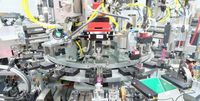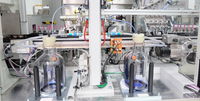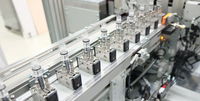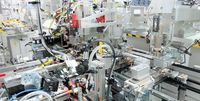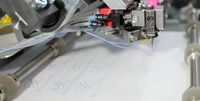Production plant for a coloured bouquet of pens
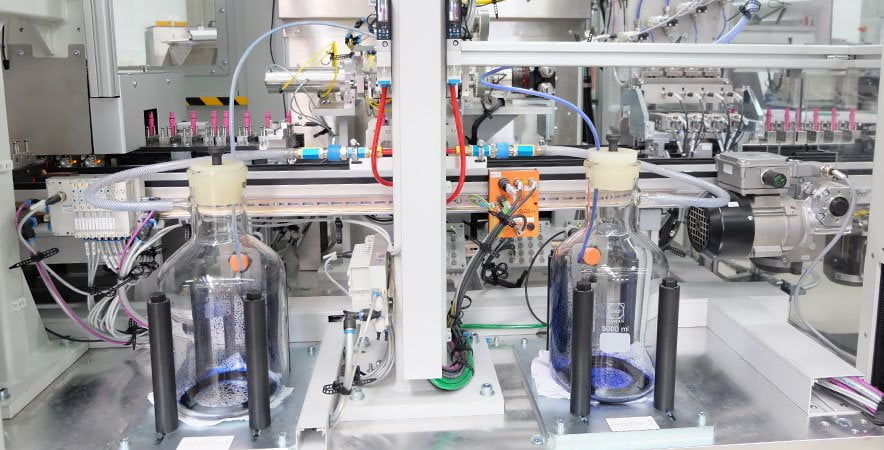
All consumer goods are mass-produced. Small price, high circulation, top-drawer quality. That’s what PIA Automation does. Our knowledge of critical product characteristics and specific production processes gives our customers competitive advantages through shorter times-to-market, since we enable a more efficient production implementation. This is why a German manufacturer of fountain pens commissioned PIA.
The plant – built at PIA’s Amberg branch – consists of 5 fully automated assembly cells and 1 manual work station connected by circulating workpiece carrier systems. The upper part of the fountain pen (writing aggregate) and the cap are being assembled in two CGM modules (each with a 16-fold rotary indexing table). 3 linear modules are used to assemble the lower part of the pen (container) as well as to test, clean, put together and pack the assemblies. The manual work station serves quality assurance and rework purposes.
The customer attaches great importance to quality which is why all the assembled fountain pens are subjected to an automated writing test. For this purpose, every writing unit must be filled with ink. Via filling heads, piercing cones, lines and pinch valves, ink flows into the writing unit. One needs paper to write so the testing station is equipped with a paper roll and a winding unit. Once the elements are filled and the paper is in position 4 components are retrieved from the workpiece carriers and passed on to the gripper system of the writing test unit. The gripper system swivels the 4 writing units and places them on the paper. In the process, a miniature vibration sensor is adapted to every single writing nib. Prior to the test, the spring is briefly tapped to allow the ink to flow into the nib. A writing pattern (contour) is completed and the structure-born sound is read by the sensor, recording the nib’s scratching sounds on the paper. A camera monitors the writing product (weight, interruptions). NOK parts are ejected to the manual workstation.

Herbert Knorr (PIA Amberg, Key Account Manager)
"Our knowledge of production processes gives our customers competitive advantages."
Following the writing test the assemblies are cleaned. This is done via injectors that extract residual ink out of the ink feeder. In a cleaning chamber a CO2 cleaning nozzle passes the units on a servo axis, cleaning the writing nibs. During the cleaning process an extraction unit creates a vertical air flow, extracting both dirt particles and CO2. Using incident light, vision systems check the nibs’ surface for contamination caused by ink, scratches and bending. Following the writing test and cleaning process, writing unit and container are put together. In the last module the pre-mounted cap is put onto the fountain pen and the writing devices are packed in paper trays, the so-called rondos.
This successfully completed project once again demonstrates PIA's cross-industry automation expertise. Gearboxes, toothbrushes, valves, sensors, shavers, injectors or fountain pens – no matter what product: The required expertise can be found in PIA's global network.
